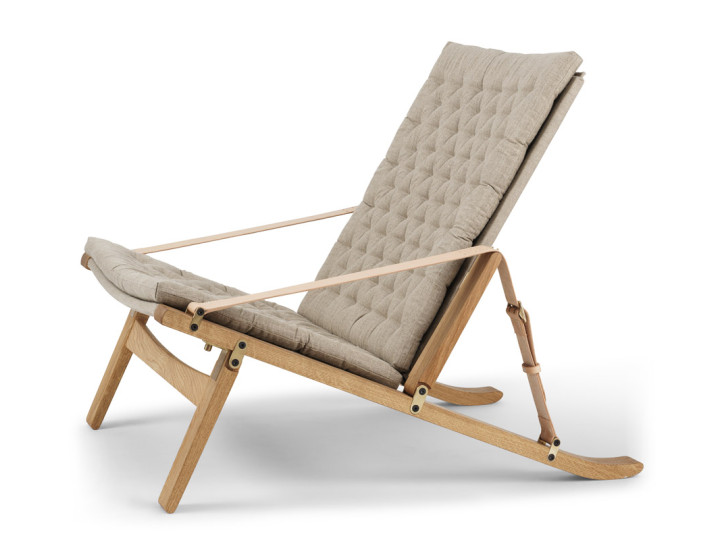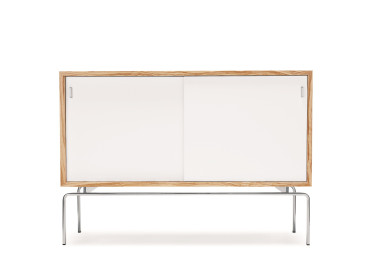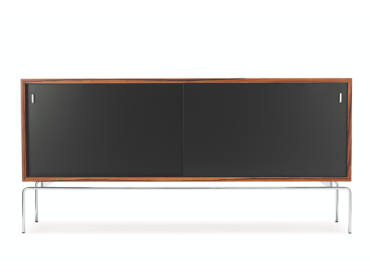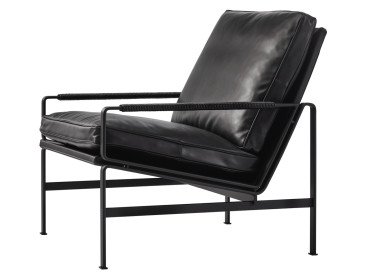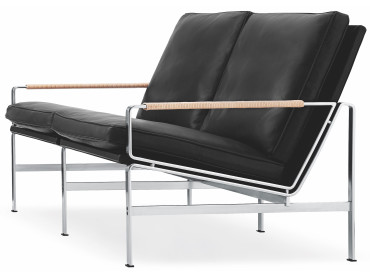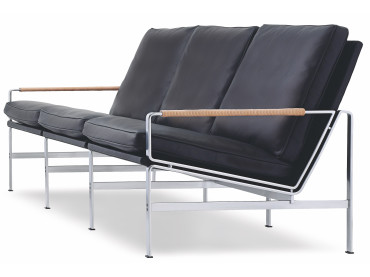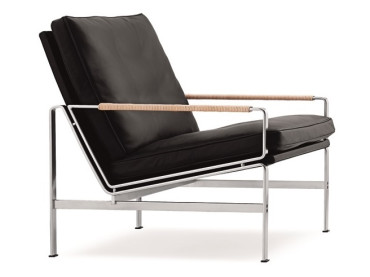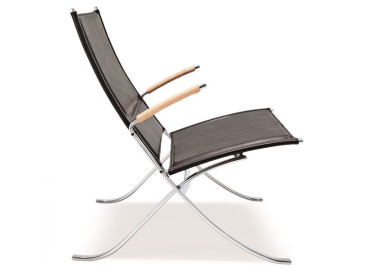Mid century Modern Danish lounge chair model FK10 Plico. New production
-
Fabricius & Kastholm
-
Carl Hansen & Søn
- CH108 On demand. Delivery time 8-10 weeks
Mid century Modern Danish lounge chair model FK10 Plico. New production *Required step
In order to help you to choose, and to receive samples, do not hesitate to contact us by email: contact@galerie-mobler.com or by phone: 01 43 33 20 12
The Plico Armchair perfectly exemplifies the philosophy of Danish design duo Fabricius & Kastholm, who excelled in the art of celebrating practical or functional details that other designers sought to conceal. Characterized by its visible joints, prominently displayed folding mechanism, beautiful brass trims, and a construction that is both simple and intelligent, the Plico Armchair made its debut in 1964 at the Copenhagen Cabinetmakers' Guild Furniture exhibition, where it received an award.
The idea behind the chair was to create a seating solution that occupies minimal space when not in use, without compromising on comfort. "Plico" means "to fold" in Latin, and despite its lightweight appearance, the comfort is remarkable thanks to the plush upholstery and adjustable headrest.
Regarding the reissue of the Plico Armchair by Carl Hansen & Son, Thomas Kastholm, the son of Jørgen Kastholm, states, "The chair marked a turning point in my father's work and proved to be the precursor to an international career in furniture design. As a child, I played under it, on it, and over it, and I always loved it. So, I am thrilled to see the chair come to life once again."
Knud Erik Hansen, CEO of Carl Hansen & Son, concludes, "The Plico Armchair is an incredibly versatile piece of furniture—not only in its functionality as a folding lounge chair but also in its appearance. It gracefully fits into a living room, bedroom, cottage, hotel room, or foyer. It provides a comfortable and cozy seat to relax with a good book and a cup of coffee."
Materials include a solid oiled or bleached oiled oak frame, leather saddle armrests, brass detailing, linen canvas backrest and seat, and foam padding.
| Year | 1952 |
| Dimensions | H : 74 cm. H seat : 37 cm. W : 74 cm. D : 85 cm. |
| Material | Oak and fabric |
| Style | Classique Neuf |
| Origin | Denmark |
| Fournisseur | Carl Hansen & Søn |
Fabricius & Kastholm
The two Danish designers, Preben Juhl Fabricius (1931–1984) and Jørgen Kastholm (1931–2007), first met at the School of Interior Design, where they both studied during the 1950s.
It was only after each had gained professional experience abroad that they reunited in 1960, discovering a shared design philosophy centered on Perfection, Aesthetics, and Minimization.
In 1961, they decided to join forces and founded their own architectural studio. Fabricius, trained as a cabinetmaker, combined his craftsmanship with Kastholm’s background as a blacksmith—making steel the natural and defining material in their work.
Although both designers created remarkable pieces individually, their greatest achievements came from their collaboration. Over eight years of partnership, they developed an extensive range of high-quality designs characterized by minimalism and functionality, often using steel, glass, and leather.
Since 2006, Lange Production has held the exclusive rights to manufacture a selection of Fabricius & Kastholm’s designs. The furniture continues to be produced at the original factory, using the same tools and methods as in the 1960s. This production is carried out in close collaboration with Jørgen Kastholm, ensuring the authenticity and exceptional quality of these timeless classics.

